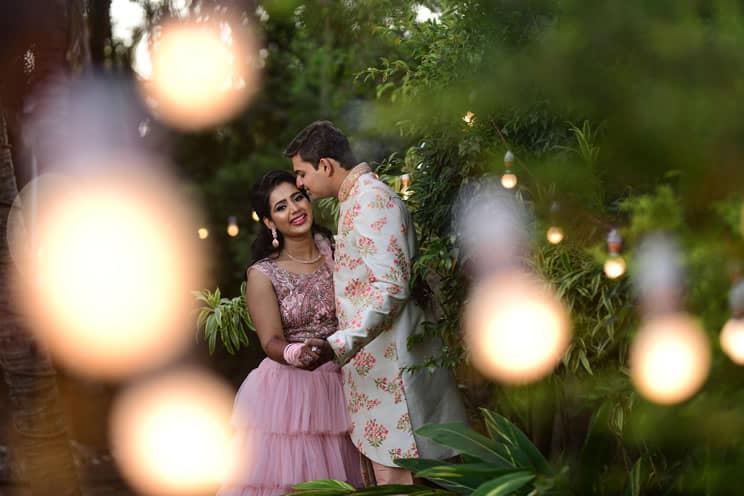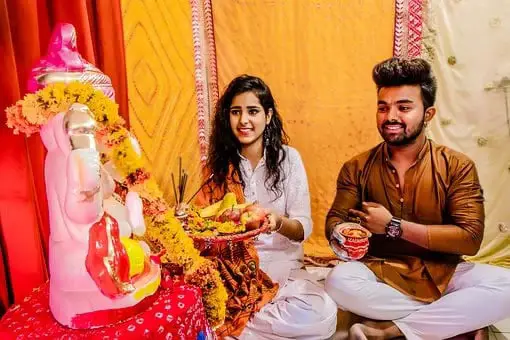
Unlike Western weddings, Hindu weddings are a religious event, as well as an incredible bond between two individuals. These weddings consist of many different ceremonies that are meant to pay respects to all who are involved, as well as all aspects of the Hindu religion. Since these events are so sacred, there are specific ways in which these weddings are meant to be performed.
Hindu weddings are long events. They usually last a few days with different events and locations happening on specific days. The elaborate ceremony typically takes place under a Mandap or canopy. A mandap can be placed either inside or outside, depending on the location and weather.
India is a country rich in culture and tradition. A Hindu wedding is one of the most significant events in a person’s life and is more than just a life event. Let’s talk about the events at a Hindu wedding.
Where are Hindu Weddings Held?
When it comes to preparing and planning a Hindu event, there are many ceremonies to consider. Most of these events take place in different locations. Some smaller ceremonies that are part of a Hindu wedding take place at the groom’s or the bride’s homes, while the main event is to take place inside of a Mandap.
A Mandap is a canopy that has pillars. It is a sacred altar for weddings and an essential part of the ceremony. The pillars are meant to represent the parents of both the bride and groom. Depending on the wedding’s location and the weather on the day, this altar can be placed either indoors or outdoors. The bride and groom sit inside of the Mandap along with the parents.
Although Hindu weddings are based on tradition and honor, the actual rituals and events can differ depending on where the families live.
Northern India and Southern India have different cultures, and therefore, different practices that are performed on the actual day of the ceremony. One example of these varying traditions is the Baraat, which is essentially a parade featuring the groom. The groom will also typically show up on an adorned horse in the parade.
How Many Ceremonies Does a Hindu Wedding Have?
When talking about where Hindu weddings take place, there are quite a few things you need to consider. The first is which event is taking place.
Hindu weddings are comprised of different ceremonies. The opening ceremony is the Ganesh Pooja, which typically happens at the bride or grooms’ home with a select number of close relatives.

Following that, the Mehndi (see my detailed guide on Mehndi) is an event for the bride and female friends and family where henna is applied in intricate and delicate patterns. This is then followed by the Sangeet, which is a meal for the two families to meet. This can also include different forms of entertainment, such as musicians or dances.
As we mentioned above, before the ceremony, some areas of India have a Baraat. This is a type of parade featuring the groom and his friends and family as they approach the Mandap. The Baraat is most often seen in areas of Northern India, but it has become a popular event in Southern India as well.
Following a Baraat, it is time for the main ceremony. This will include dinner, drinks, and the main wedding ceremony.
What Makes a Hindu Wedding Unique?
Unlike traditional Western weddings, a Hindu marriage comprises multiple ceremonies and events to honor the families and the Hindu religion. In addition to having the main ceremony bring the bride and groom together, there are particular events that are held in different locations.
In Hindu weddings, the actual events of the wedding are held in many different places. Some events are held at the bride and groom’s homes, while others are held in unique locations both inside and outside. One of the most significant factors in where a Hindu wedding is held depends on the weather. There are some areas in India that see snowfall, while others see extreme temperatures.
What Do All Hindu Weddings Have in Common?
Most Hindu weddings are an enormous deal for those involved. Not only are the bride and groom entering a new phase of their life, but it is also one of the most honorable things you can do in the Hindu religion. There are specific ceremonies that all Hindu weddings have, but those can also vary depending on the family’s wishes and traditions.
One thing that is standard in all Hindu weddings is the use of the Mandap canopy. No matter where a wedding is taking place or if it is inside or outside, a Mandap will be present. The canopy symbolizes the four stages of life according to the Hindu religion and a healthy family behind the bride and the groom.
In addition to paying honor to the families, Mandap also pays homage to the Earth and the Hindu religion as a whole. The four pillars of the canopy can also represent the elements of Earth, Water, Fire, and Air. The canopy at the top is meant to represent the element of Space. Mandaps are intended to be the start of the universe, which makes them such a fundamental part of the Hindu wedding celebrations.
Are There Any Differences in Weddings Held in Different Areas of India?
The typical Northern India wedding usually takes place at the home of the bride’s family. Although there are still a number of ceremonies before and after the main marriage event, the Baraat is one of the more unique ceremonies that are traditionally seen in the Northern regions of the country. These ceremonies also tend to run much later than those in Southern India, sometimes ending after midnight or later.
Southern Indian weddings are heavily focused on tradition. There are often more procedures involved in a marriage and can sometimes take longer, which is why many of these weddings usually start earlier in the day.
Southern Hindu weddings are often held in a type of venue or hall where there are more religious practices performed before the main day of the actual wedding event. Even how the groom approaches the ceremony and what the bride chooses to wear can be very different depending on the family’s location and the wedding itself.
Final Thoughts
In every country and culture, weddings are one of the most significant events in a person’s life. It is a milestone for that individual, but it can also help ensure the family lasts. Many people choose to have a wedding that is in line with their religion and beliefs, and Hindu weddings are one of the most connected celebrations in the Indian and Hindu culture.
These weddings consist of many different celebrations all to honor various family members, different elements, and to honor the Hindu religion as well.
Some of these celebrations can vary depending on the geographical location of the wedding. Northern India weddings tend not to be as tradition-focused as Southern Indian weddings, but they all have one common element. The presence of the Mandap signifies a healthy marriage and bond between the bride and the groom, as well as honor to the family and the Earth.
The locations for a Hindu wedding can vary depending on the weather of a particular region, as well as the ceremony that is taking place. Some ceremonies can take place at the home of the bride or the groom, while others may be in a grand hall for all to see. Hindu weddings are heavily based on tradition and are an incredible event to witness.
Sources:
https://www.linandjirsa.com/mandap-indian-wedding-tradition/
https://www.manhattanbride.com/insights/indian/
http://thebigfatindianwedding.com/2014/the-essential-guide-to-hindu-weddings-wedding-traditions
https://www.thetamarindtree.in/the-shastra-behind-your-wedding-mandap-design/2019/1/3/the-shastra-behind-your-wedding-mandap-design
